Detergents, Soaps, & Other Surfactants
The chemical structure of cleaning agents.
Types of Mixtures
Solutions
Solutions are homogeneous mixtures in which no settling occurs. Homogeneous indicates that there is no visible, distinct separation between the solute and solvent of a solution. Therefore, a solid (solute) is dissolved fully within a liquid (solvent) and no particles are visible.
Suspensions
Suspensions are different then solutions because they are heterogeneous mixtures. Heterogeneous mixtures contain particles that are easily distinguishable from the other parts of the mixture. The particles are large enough to be visible.
Colloids
Colloidal suspensions are the intermediate of solutions and suspensions. The particles present are larger than the typical molecules in a solution but are small enough that they don’t settle. Importantly, these particles are large enough to scatter light, a property known as the Tyndall Effect.
Preparation of Colloids
Colloids are prepared by producing particles of colloidal dimensions and distributing these particles throughout a dispersion medium. Particles of colloidal size are formed by two methods:
- Dispersion methods: breaking down larger particles. For example, paint pigments are produced by dispersing large particles by grinding in special mills.
- Condensation methods: growth from smaller units, such as molecules or ions. For example, clouds form when water molecules condense and form very small droplets.
A few solid substances, when brought into contact with water, disperse spontaneously and form colloidal systems. Gelatin, glue, starch, and dehydrated milk powder behave in this manner. The particles are already of colloidal size; the water simply disperses them. Powdered milk particles of colloidal size are produced by dehydrating milk spray. Some atomizers produce colloidal dispersions of a liquid in air.
An emulsion may be prepared by shaking together or blending two immiscible liquids. This breaks one liquid into droplets of colloidal size, which then disperse throughout the other liquid. Oil spills in the ocean may be difficult to clean up, partly because wave action can cause the oil and water to form an emulsion. In many emulsions, however, the dispersed phase tends to coalesce, form large drops, and separate. Therefore, emulsions are usually stabilized by an emulsifying agent, a substance that inhibits the coalescence of the dispersed liquid. For example, a little soap will stabilize an emulsion of kerosene in water. Milk is an emulsion of butterfat in water, with the protein casein serving as the emulsifying agent. Mayonnaise is an emulsion of oil in vinegar, with egg yolk components as the emulsifying agents.
Soaps & Detergents
Soaps
Soaps were originally made by boiling fats with a strongly basic solution made by leaching potassium carbonate from wood ashes with hot water. Animal fats are made up of fatty acids (long-chain carboxylic acids). Once as strong base is introduced to these fatty acids, glycerol and fatty acid salts are formed along with insoluble calcium and magnesium. These fatty acid salts are soap, while the insoluble calcium and magnesium are referred to as hardwater.
Detergents
Detergents are soap substitutes. They are also composed of long hydrocarbon chains and an ionic group (usually sulfate or sulfonate). The benefit of detergents is that, rather than producing insoluble hardwater, water soluble products are formed. These products will wash away easily.
So, how does soap/detergent work?! The cleaning action of soaps and detergents can be explained in terms of the structures of the molecules involved. The hydrocarbon (nonpolar) end of a soap or detergent molecule dissolves in, or is attracted to, nonpolar substances such as oil, grease, or dirt particles. The ionic end is attracted by water (polar). As a result, the soap or detergent molecules become oriented at the interface between the dirt particles and the water so they act as a kind of bridge between two different kinds of matter, nonpolar and polar. Molecules such as this are termed amphiphilic since they have both a hydrophobic (“water-fearing”) part and a hydrophilic (“water-loving”) part. Amphiphilic species form a micelle structure (shown below). As a consequence, dirt particles become suspended as colloidal particles and are readily washed away. The figure below shows this interaction.
Surfactants
Like soaps and detergents, surfactants are composed of hydrophilic tails and hydrophobic tails. Notice the structure of the surfactant molecules below! Each of these molecules contains a long hydrocarbon chain and an ionic group.
These molecules are present within many other cleaning personal care products, like shampoo and toothpaste. Lauryl hydrogen sulfate is the parent compound in which specific surfactants (for specific personal care products) are derived. Below we will explore common surfactants used in shampoos and toothpaste products.
Shampoo
Ammonium lauryl sulfate or triethanolammonium (TEA) lauryl sulfate are typical surfactants found in shampoos. They are decently soluble in cold water and are less drying than other surfactants. In a later lesson, we will discuss the cleaning properties of shampoo as well as the structure of hair follicles.
Toothpaste
The purpose of toothpaste is to clean teeth and remove plaque (a coating on teeth that houses bacteria, leading to tooth decay). Toothpastes not only contain surfactants, which we will discuss below, but must also contain abrasives and detergents in order to clean teeth and remove plaque.
A common surfactant present in dentifrices is sodium lauryl sulfate, which is the sodium salt of lauryl hydrogen sulfate. Furthermore, the compound N-lauroyl sarcosinate is often used in toothpastes. This compound effectively inactivates enzymes that are directly associated with tooth decay.
